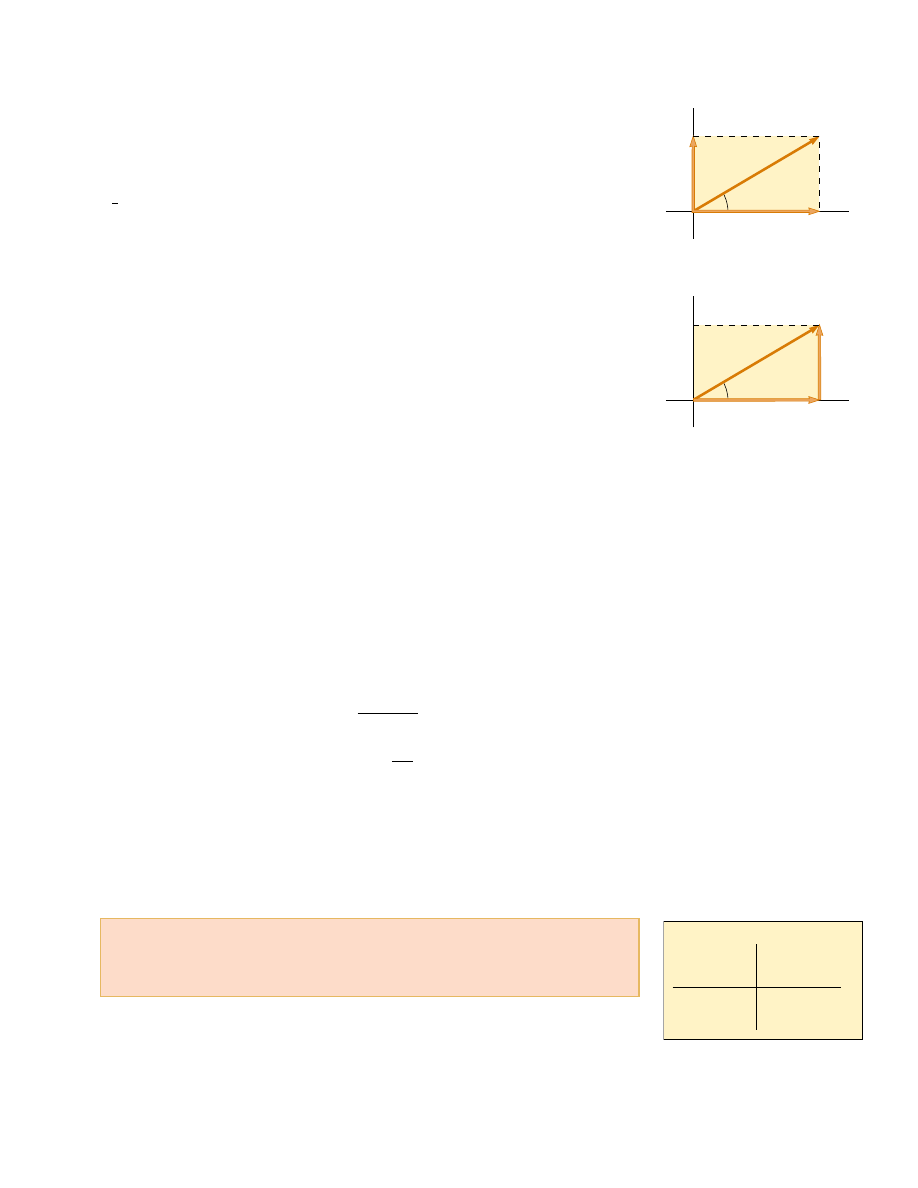Physics For Scientists And Engineers 6E - part 17

Multiplying a Vector by a Scalar
If vector
A is multiplied by a positive scalar quantity m, then the product mA is a vector
that has the same direction as
A and magnitude mA. If vector A is multiplied by a nega-
tive scalar quantity # m, then the product # m
A is directed opposite A. For example,
the vector 5
A is five times as long as A and points in the same direction as A; the vector
is one-third the length of
A and points in the direction opposite A.
3.4 Components of a Vector and Unit Vectors
The graphical method of adding vectors is not recommended whenever high accuracy
is required or in three-dimensional problems. In this section, we describe a method of
adding vectors that makes use of the projections of vectors along coordinate axes.
These projections are called the
components of the vector. Any vector can be com-
pletely described by its components.
Consider a vector
A lying in the xy plane and making an arbitrary angle ! with the
positive x axis, as shown in Figure 3.13a. This vector can be expressed as the sum of two
other vectors
A
x
and
A
y
. From Figure 3.13b, we see that the three vectors form a right
triangle and that
A " A
x
%
A
y
. We shall often refer to the “components of a vector
A,”
written A
x
and A
y
(without the boldface notation). The component A
x
represents the
projection of
A along the x axis, and the component A
y
represents the projection of
A
along the y axis. These components can be positive or negative. The component A
x
is
positive if
A
x
points in the positive x direction and is negative if
A
x
points in the nega-
tive x direction. The same is true for the component A
y
.
From Figure 3.13 and the definition of sine and cosine, we see that cos ! "
A
x
/A
and that sin ! "
A
y
/A. Hence, the components of
A are
(3.8)
(3.9)
These components form two sides of a right triangle with a hypotenuse of length A.
Thus, it follows that the magnitude and direction of
A are related to its components
through the expressions
(3.10)
(3.11)
Note that
the signs of the components A
x
and A
y
depend on the angle !. For
example, if ! " 120°, then
A
x
is negative and A
y
is positive. If ! " 225°, then both A
x
and A
y
are negative. Figure 3.14 summarizes the signs of the components when
A lies
in the various quadrants.
When solving problems, you can specify a vector
A either with its components A
x
and A
y
or with its magnitude and direction A and !.
! "
tan
#
1
"
A
y
A
x
#
A "
√
A
x
2
%
A
y
2
A
y
"
A sin !
A
x
"
A cos !
#
1
3
A
SECTION 3.4 • Components of a Vector and Unit Vectors
65
y
x
A
O
A
y
A
x
θ
(a)
y
x
A
O
A
x
θ
(b)
A
y
Figure 3.13 (a) A vector A lying in
the xy plane can be represented by
its component vectors A
x
and A
y
.
(b) The y component vector A
y
can
be moved to the right so that it
adds to A
x
. The vector sum of the
component vectors is A. These
three vectors form a right triangle.
▲
PITFALL PREVENTION
3.2 Component Vectors
versus Components
The vectors A
x
and A
y
are the
component vectors of A. These
should not be confused with the
scalars A
x
and A
y
, which we shall
always refer to as the components
of A.
Quick Quiz 3.5
Choose the correct response to make the sentence true: A
component of a vector is (a) always, (b) never, or (c) sometimes larger than the magni-
tude of the vector.
y
x
A
x
positive
A
y
positive
A
x
positive
A
y
negative
A
x
negative
A
y
positive
A
x
negative
A
y
negative
Figure 3.14 The signs of the com-
ponents of a vector A depend on
the quadrant in which the vector is
located.
Components of the vector A
Suppose you are working a physics problem that requires resolving a vector into its
components. In many applications it is convenient to express the components in a co-
ordinate system having axes that are not horizontal and vertical but are still perpendic-
ular to each other. If you choose reference axes or an angle other than the axes and
angle shown in Figure 3.13, the components must be modified accordingly. Suppose a